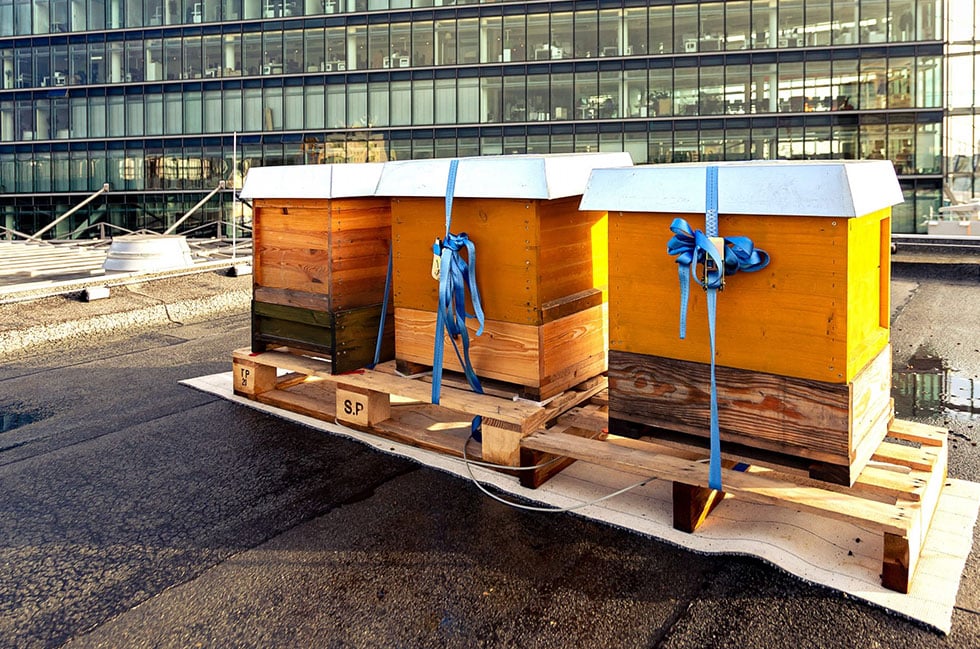
Three bee colonies live high above the city on the roof atop the Lindner Hotel with a view across City West. Here, at least 5,000 bees are expected to populate each colony during the winter. Right now, they are huddling together and reducing their energy needs to an absolute minimum. In spring, when the temperature exceeds 10°C and the weather is dry, the busy bees start off to collect as much nectar as they can. Bee colonies cover an average flight radius of up to 3 kilometres. And under normal weather conditions, the height of the roof does not pose any challenge to the bees.
The yield of honey or nectar for a bee colony with around 50,000 bees can be up to 300 kg annually in this part of the world. Indeed, the conditions for bees in the city are often better than they are in the countryside. This is because there are no monocultures in the city, meaning that parks and green areas offer a diverse range of plants and flowers all year long and thus a provide a bountiful buffet for the bees. Initially, the bees need most of the honey they produce for themselves and as feed for the winter months. However, it is expected that each bee colony will produce a surplus of between 10 and 50 kg this year.
Our bee colonies originated last summer as an offshoot from other bee colonies from Berlin-Charlottenburg. The nuptial flight took place in Berlin-Wilmersdorf, where the male bees (drones) mated with the queen bees. So, bees made in Berlin – experts also refer to them as a “Berlin mixture”. As the number of bee colonies is declining and everyone knows how important bees are to humans as pollinators, we are delighted with this project, in which we provide three bee colonies with a perfect habitat and contribute to the overall increase of the Berlin bee population.
